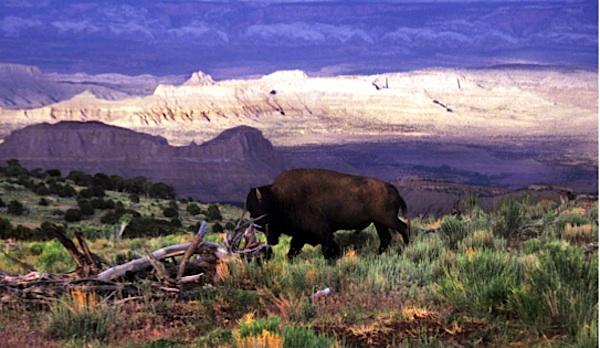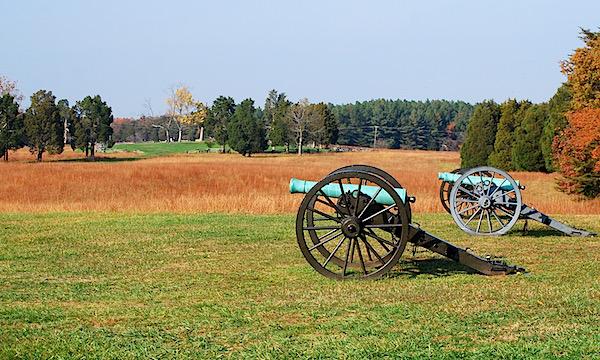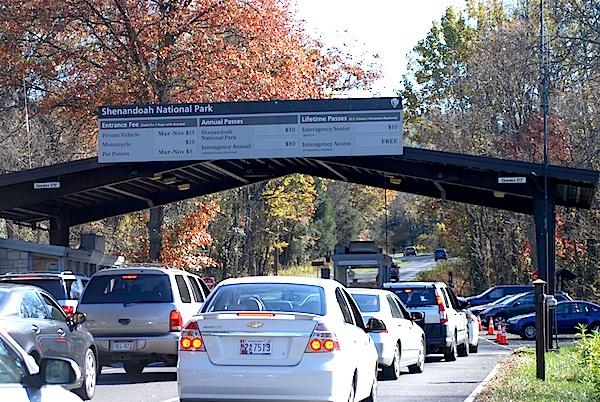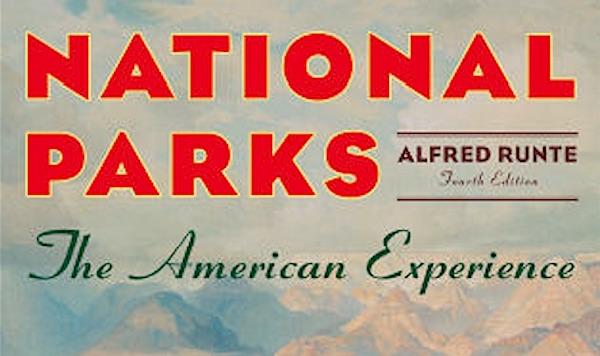
Heading into its centennial year, what must the National Park Service do to flourish?
Editor's note: Harry Butowsky spent more than three decades working for the National Park Service as an historian. He's worked for a handful of directors and seen much change in the agency. Understandably, he has an interesting perspective on the upcoming centennial of the National Park Service.
The National Park Service reminds me of a proud old ship sailing confidently across the North Atlantic. The captain is beaming and the passengers seem contented, at least, those traveling first class on the upper decks. It's below decks that the problems lurk. The crew is perhaps too easy going, believing the ship will always reach New York. However, the engines are old, the iron plating is thin, and the rivets are working loose. Granted, the Titanic is not a good analogy, since that ship was perfectly new. Otherwise, the analogy fits. The older things get'including institutions'the more they are in need of major repairs.
In the case of the National Park Service, the overhaul is long overdue. I spent my entire career in the History Division, which operates out of Washington, D.C. Some directors listened to the Division and others did not. Those that listened, I do believe, enjoyed smoother sailing in every division.
So, you will understand where I am coming from. I base my call for new backbone in the Park Service on good history. Only if the Park Service wants to tell a credible story can its centennial rise above mediocrity. My recommendations start with coming to grips with reality, and end with a call to historical arms.
This is my manual, if you will, for a great centennial, after which I invite you to offer your own. Just don't tell me that history is unimportant. In the Park Service, there is already enough of that myth going around.
Priority One: Address the Backlog
First, put this figure solidly in your mind'$11.5 billion. That's the backlog'the true funding shortage crippling all of our national parks. What is more, we can be sure that Congress is not likely to free up even a fraction of those needed funds. How can we be sure? Because the nation is $18 trillion in debt, with another $100 trillion in unfunded liabilities. At $4 trillion annually, the entire annual budget of the United States cannot possibly meet those backlogs. We have to address the Park Service backlog as part of that greater problem, or else nothing we suggest will make sense.
Instead, Park Service administrators have opted to act as if nothing is amiss. Committees have been formed; deals are being struck. It's as if the backlog did not exist.
Consider the blizzard of news releases announcing new directions for the agency. That's not an iceberg up ahead, folks. That's an opportunity to 'reach out.' Fine, but how will the reaching out be funded? If these new initiatives cannot be paid for, how can any of them be considered sincere?
Here's just one example: http://citiesspeak.org/2015/04/20/national-park-service-launches-nps-urban-agenda/ So it's an urban agenda now. But again, where is the funding? Urban, rural, or wilderness, how will these 'initiatives' be paid for? If the problem holding everything back is money, what good does it do to keep making promises that no one can possibly keep?
Priority Two: Make the Size of the National Park System Fit the Budget
Face it. There are just too many units in the National Park System for the money the Park Service has on hand. The country may want 407 units, but the agency cannot afford half that many. The proof again is all those news releases. That is what bureaucrats do when they lack solutions. They keep conjuring up new initiatives and programs, hoping that one will prove a 'hit.'
They hope then to take the 'hit' to Congress and ask for the money they don't have. Fine, but $11.5 billion? That will require more than an urban initiative, or a youth initiative, or a science initiative, or a deal with Budweiser. It will rather require convincing the United States Congress that 'eventually' will be too late. Preservation cannot run on 'eventually.' Those dollars are needed now.
Will the parks get those dollars? History says no. In Congress, waiting for money can turn into an eternity. Just ask Yellowstone in 1872. In 2016 and beyond, we need to face the reality of our current budgetary and staffing limitations. I say that means cutting parks.
What would be the magic number to cut? Actually, I would not cut a one. I would simply put those parks back where they belong'with the states, or even cities and counties, that should have been given the responsibility in the first place.
Before we do that, I hear some people screaming, we should raise the fees at the gate. That will work somewhat for the bigger parks, but not every park is as popular as Yellowstone or Grand Canyon. In the end, it still comes down to Congress and that $11.5 billion backlog. There is only so much money to go around.
Certainly, not every park needs to be a federal entity just because the states refuse to act. In the 1920s, the preservation of many desirable landscapes was confidently left to the states. To name just a few, look at the wonderful state-park systems in New York, Pennsylvania, Wisconsin, and California. Why is that not happening now? Because many states'and many environmentalists'think of the federal government as a bottomless pit. Just shake the money tree and write another news release. Park created and problem solved!

National battlefields and military parks such as Manassas (above) and Fredericksburg and Spotsylvania are prominent in the National Park System, but how many battlefields does the Park Service need?/Kurt Repanshek
Unfortunately, the problem only keeps worsening. How many battlefields do we need to interpret the Civil War, for example? There were 5,000 separate actions. Cannot some of the 'action' revert to the states? And parkways, How many of those do we need? While I personally use the George Washington Parkway, I am not convinced it needs to remain a national park.
Mount Vernon is not a national park. Does that in any way lessen its significance? Is not George Washington still a national figure? Then there is Steamtown, in Scranton, Pennsylvania. Sure, let's have a great park acknowledging railroad history, but why can't it managed by a state? Steamtown was blatantly intended to boost Scranton's local economy. Why should Uncle Sam be doing that?
And the urban parks. We all love open space. But why must the federal government be expected to fund them all?
Granted, it seems that government always has another pot of money. The problem is: It is always someone else's pot. No doubt, decommissioning just one aircraft carrier would fix the backlog, but that will never happen. American culture just doesn't work that way. That aircraft carrier employs people, too. We have to fix the number of parks within what Congress is willing to give the National Park Service, or Congress will not hear a word.
Priority Three: Establish Zero-Based Budgeting
Toward that end, the National Park Service needs to implement a zero-based budgeting system that will look at all of the regional and Washington, D.C., offices and programs. Does calling redundancy 'regional' make it right? Why can't every superintendent report to a leaner agency? But no, the staffing adjustments always come at the bottom, followed by a cry for more volunteers. Somewhere in that pile of news releases, I believe I saw that one. How can young people be expected take any 'initiative' on a salary of $10 a day? You want more 'minorities' to believe in the parks'and work in them? Then pay them an honest wage.
Priority Four: Put History Back in the Parks
None of this is of any surprise to historians. In various forms and guises, they have seen all of these problems before. This is to explain my pet peeve. It's actually misleading to create a 'historical' park. After all, every park comes with a history. Then let's see that visitors learn it, whether the park be Gettysburg or Yellowstone. The Park Service should start with every employee, including everyone working for the concessionaires. It's not just a job, folks. It's a calling. If you just want a job, McDonalds is hiring, and there should be plenty of openings at Burger King. In the parks, you work for generations yet unborn, and their legacy begins with your knowing that.
Start with your park's administrative history. You say your park doesn't have one? Then get an M.A. and write it as a thesis, or perhaps the dissertation for your Ph.D. Every park should have an up-to-date administrative history. How did we get this park? What is its mission? Where have we failed the public in the past? And believe me, we are always failing the public. That is what an administrative history is meant to correct for the future.
Nor should administrative histories be limited to individual parks. The system itself needs many such histories, broadly targeted to system issues. Can anyone doubt the importance of the role of concessionaires in park history? They have power. They have money. How does that influence the parks for good or ill? Where is the comprehensive history of the relationship between the National Park Service and the concessionaires? Here again, there is no such history, and some employee'with proper incentive from the agency'just might take the initiative to write it.
And fee policy. The last time the Service completed a history of that was in 1982. An update is long overdue. After all, fees now stay with the parks. Consider the 'backlog' again. Can it truly be erased just by changing the fee structure? We simply don't have enough history to guide us. We are still blindly looking forward without honestly looking back.

How far can higher fees go towards erasing the Park Service's maintenance backlog?/Kurt Repanshek
Nor does it end with fees and parks. Key documents such as the organizational charts and lists of all National Park Service Management personnel have not been updated since the late 1980s. See Organizational Structure of the National Park Service 1917 to 1985. Another key document, Historic Listing of National Park Service Officials.
And let us not forget the directors. At one time they were inclined to write useful and important books, or extensively shared their career findings with professional historians. The lessons a director learns are invaluable. The last to detail his experiences in a book was James Ridenour. The Service should commission a history of the management decisions and operational successes/failures of every director that ever served.
So, too, the National Park Service Thematic outline was last updated in 1987. Perhaps it is time for a new update. I am not referring to the 1994 thematic outline, but to the original thematic outline that dated back to 1929 when it was first conceived, History and Prehistory in the National Park System and the National Historic Landmarks Program.
If there is ever a commission charged with recommending the total number of parks which should be kept'and which should be transferred to state, local, or private authorities'this document will be needed. Better said, it will be essential.
Priority Five: An Educated Workforce
It is no wonder that rank-and-file members of the Park Service are drifting, too. An educated workforce is a confident workforce, but where are the materials supporting that education? Fortunately, there the future is somewhat brighter, thanks to historians from outside the agency. But again, employees must be given incentives to read their books.
Did I say books? You bet I did. Now that would be an 'initiative' capable of making a difference tomorrow morning'and without asking Congress for additional support.
Every employee needs to read those books. Of the six or seven books I would assign, one tops my list. That would be Alfred Runte's National Parks: The American Experience, the best book written on the national parks of all time. Think, then, of the thousands of employees in the Park Service who have never read it, including the current director of the National Park Service himself.
At least, if Director Jarvis has read it, he has never told me, or acted as if he did. A director who reads for effect would never be making the mistakes we see today. As one reviewer said of National Parks: The American Experience in an article for The Washington Post, 'At Interior, on Capitol Hill, and in the White House, National Parks is a must.'
A must does not mean a choice. Of course, some employees choose to read; my point is that all should made to read as a prerequisite for employment. My other titles would include:
1. The relevant administrative history'or its equivalent'of the employee's current park.
2. Alfred Runte, Yosemite: The Embattled Wilderness (Lincoln: University of Nebraska Press, 1990).
3. Lary M. Dilsaver, editor. America's National Park System: The Critical Documents. Lanham, MD: Rowman & Littlefield Publishers, 1997
4. Polly Welts Kaufman, National Parks and the Woman's Voice: A History. Albuquerque, NM: University of New Mexico Press, updated ed., 2006.
5. Horace M. Albright as told to Robert Cahn. The Birth of the National Park Service: The Founding Years, 1913-33. Salt Lake City: Howe Publications, 1985).
6. Richard West Sellars, Preserving Nature in the National Parks: A History New Haven: Yale University Press, 1997).
The Park Service should make it simple and provide these books on employment, with the appropriate 'testing' as each employee advances. A test? Yes again, a test. These are government jobs subject to Civil Service approval. And even the Director should not escape. The public deserves to know that the Service knows what it is managing. That backlog did not emerge just out of the blue.
Even without any ' new' history, we have a rich mother lode of information about our parks in both print and electronic format. This information represents the accumulated wealth and experience of generations of national park employees. I would like to see nothing better for 2016 than to make this heritage of information easily available to all. Much of it can be found now on the web but no one knows where to look or what to look for. Many capable and hardworking people are trying to correct the issue. Let us support them and get the job done.
Information that cannot be found is useless. So yes, add the National Parks Traveler to my list of must-have sources that every employee should know'and want'to follow.

The National Park Service needs to revive its commitment to history/Kurt Repanshek
Allow me to close by reminding everyone what a scholar does. In the National Park Service, we in the History Division kept our agency 'out of trouble' by keeping the director'and many others'fully informed. Our job was to make them 'look good' in the eyes of Congress, the president, and the public. I did that job with pride.
As proof of my comments above, look no further than what happened to the History e-library site after I retired. There has not been a single update in three years. Most of the existing links to online studies are broken and the site still claims 397 parks. Really, now?
The immense collection of National Park Service studies, reports, and information on this web site just collapsed due to lack of any support or attention. Why was a decade of taxpayer-supported effort not fully lost? Because, once I realized what was happening, I transferred all of the existing 3,500 studies to my personal web site and added a few thousand more. The material is still available, but not because the Park Service wanted it available. I did it as my personal contribution to history, and it didn't cost the taxpayers a dime.
You wonder why I get frustrated'and even angry? Because that is not how government'your National Park Service and mine'is supposed to work. The History Division is not some localized group of history buffs. Sure, we all get behind, but three years and a busted website? Now what? More things like 'Washington Slept Here?' History is what Washington and the country did. The National Park Service is America's face to the world, and all the History Division is allowed to do now is put lipstick on another news release.
How could anyone possibly blow the history of the National Park Service during its centennial, of all things? A good question, and here is how they are blowing it. Upper management has thrown history in the trashcan and still expects the nation to be inspired. Trading on the prestige of the agency, they then expect the public to go along.
In the past, that would not have happened. Even the crippling backlog, if not entirely erased, would certainly have been addressed. Nor would the cost-savings have come at the price of history. Here again, anyone can trot out the Organization of American Historians and say that the profession 'approves.' Well, the professional historians that matter do not approve, and I have talked to every one of them.
History is not a toy. The national parks deserve our very best, both in terms of management and professional history. Now, start making friends with the history of your favorite park. And do urge its managers to do the same.




Comments
Ok I will accept the dunce cap. So now that I have it on, I am going back through the article carefully. I can't respond to it all at once, so in pieces:
Part 1 is an introduction using an analogy. Analogies are cute but I don't really buy them for serious consideration anymore. They are extremely fun when used in John Oliver's show on HBO, but kind of a waste in serious discussion. So enough said about part 1...
Part 2 is the Priorty 1 Backlog. Indeed a very real issue. My question at this point is regarding the NPS Urban Agenda example. If I am understanding Harry' point clearly, it's that there is no funding for new projects, so trotting them out as "getting something done" is really just a dog and pony show. OK I am paying attention because that seems pretty legit. I could use some help and clarification though. First, the link Harry provided says exactly where the funding would come from for the NPS Urban Agenda:
"Importantly, the NPS Urban Agenda is supported by the President’s 21st Century Conservation agenda that calls for full funding of the Land and Water Conservation Fund and a $326 million NPS Centennial Fund. If enacted by Congress, this would provide an additional $107 million for federal land acquisition, $47 million for state grants, and $25 million for the Urban Parks and Recreation Fund....."
So is the point that such funding will never happen? Or is there some other point being made here?
Second, I live in the St. Louis area so see firsthand what is going on with the arch. The project is in full swing. It will make for a much better experience for visitors. The Arch, whatever your personal opinion of it is, has a very real economic impact on the city. So using one of the specific examples from the article, is Harry's point that the Arch grounds improvement is not funded? Or that it will never happen due to budget constraints? Or that it is money that should be spent elsewhere on the NPS system? A combination of all of the above? Something else?
thanks
I have been in communication concerning Harry Butowsky's recent op-ed article in National Parks Traveler with a few NPS'ers who are still in the field. In general, most agree with Harry's point of view. The major point of contention has to do with whether or not the NPS maintenance backlog would be better addressed if the number of park units within the NPS system of parks were increased, kept the same at present, or somehow decreased as recommended in the main article by by Harry.
However, here is one comment that I received today that I found worthy of forwarding (with permission of the commenter, but withholding both the name of the commenter and the park ):
<< I agree with Butowsky's assessment and recommendations, especially the one that Directors need to read Runte's book. I have not been impressed with our current director. He should be spending the year on the road visiting all the parks and meeting with frontline staff to get a grip on the realities they experience today in preparation for the real Centennial next year. Interestingly, my park is having problems getting staff involved in the Centennial. There's little interest. Here's my assessment of this problem: no one is in a celebratory mood! Everyone is overworked an not getting what they need on many levels to get their jobs done effectively. The reality at my park is that the Emperor has no clothes.>>
CHNSRA used to be a state park, no one with a grasp of reality is happy with the way it is being managed recently. Many are calling for it to be returned to state control, I can only hope that it does.
Owen, your anonymous post mirrors what I've heard from the NPS at CHNSRA. They don't enjoy the job because they are so disliked, banned from local businesses, called names, flipped off, ignored, and afraid to approach visitors for fear of negative confrontation.
The enviromental extremist left have poisoned the parks and its leadership. You guys have made your bed, enjoy it.
To quote E.O. Wilson, the eminent biologist and membert of the National Parks Second Century Commission:
We a much bigger National Park System, not a smaller one. Dozens of areas of national park quality across the country are being damaged or destroyed by logging, grazing, fracking, mining, ORV abuse, or commercial development. Those who want to freeze or shrink our National Park System are relegating those areas to being ruined because of short-term budget priorities. I don't think future generations will consider that to be an acceptable reason.
The new national parks movement is thriving around the world, but it has been stalled here in the United States since the Reagan era. Political leaders and conservationists have all but abandoned advocacy for new national parks and support for the existing National Park System. We are seeing the results of three decades of neglect.
We need to shift from a losing and endless defensive position and to go on the offensive to protect America's greatest natural and cultural treasures. The National Park System is the gold standard for such protection. We need a positive and inspiring vision for expanding the system and funding the parks we now have. We need to create the same kind of broad conservation coalition that resulted saved millions of acres through the Alaskan Lands Act. When we do, the American people will be behind us.
An oxymoron in the first sentence.
Michael - what is your solution for reversing these "short-term" budget issues? Can you justify the inclusion of such units as the GW, BW Parkways? Sure, there may be some areas that would qualify to be added but there are many that don't warrant or don't require NPS status for protection.
Thank you Michael Kellett and thanks for E.O. Lewis quote.
Thanks, Michael Kellett. Be warned there are a handful of climate change deniers here that make a lot of noise, and try to make it look like they're the only ones in the room.
Most of us have just decided not to wrestle in the mud with them any more.
EC,
1. Regarding your denial of climate change, It is ironic that you made it the day after this announcement.
2. Regarding my solution for reversing short-term budget issues, the reality is that federal funds flow toward political influence. In recent years, overwhelming influence over government revenue and spending has been captured by anti-government Republicans, Wall Street and other special corporate interests, and the military-industrial complex. They have power, but they represent a tiny fraction of the American population. In contrast, the National Park System receives almost 300 million visitors a year. If only a small percentage of them are mobilized to demand adequate funding of existing parks and expansion of the system, they will shift the balance of power in that direction. What has been missing is the leadership needed to catalyze that mobilization.
3. Regarding justification for keeping existing units of the National Park System, I have — thus far — visited 248 of these units in 45 states, DC, Puerto Rico, and Virgin Islands. That includes the George Washington and Blue Ridge Parkways, Steamtown, and most other areas often cited as unworthy of national park status. To date, I have not been to a park that I believe should be removed from the National Park System. I think most Americans would agree with me.
4. Regarding additions to the National Park System, I am glad that you would support some additions. But, it should be noted that we cannot depend on other land designations to ensure the same level of protection or permanence as National Park System designation. BLM and U.S. Forest Service special management areas offer considerably weaker protection and much smaller management budgets. Some state parks provide robust safeguards and excellent programs, yet most allow damaging uses that would not be allowed in national parks and they suffer from far more limited budgets. Private landowners and nonprofit organizations have preserved many important places, but they cannot offer the permanency of public ownership. For places of national significance, National Park System designation is unsurpassed.